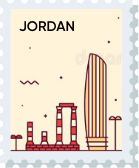LAMP vs. MEAN: A Comparison of Popular Web Development Stacks

Quick Summary: Over time, the technology utilized for constructing websites has undergone substantial advancements, resulting in the rise of specific frameworks that have gained popularity in web application development. Two widely used technology stacks are LAMP, comprising Linux, Apache, MySQL, and PHP/Python/Perl, and MEAN, incorporating MongoDB, Express.js, AngularJS, and Node.js. While the specific languages and frameworks have changed, the fundamental approach of combining databases, servers, programming languages, and libraries into a cohesive stack has remained constant. Though the acronyms highlight different tools, both LAMP and MEAN provide proven solutions for building dynamic websites and applications. This article contrasts these two approaches, looking at their characteristics, benefits, and applications to assist developers in making knowledgeable choices about utilizing them.
LAMP Stack Overview:
The commonly used software stack for web development called LAMP is made up of Linux, Apache, MySQL, and a programming language for the server side like PHP, Python, or Perl. This set of open source technologies is well-liked for constructing dynamic websites and web apps. LAMP provides a solid and open source collection of components that is widely accepted for customized web development and hosting situations, especially for dynamic web apps and content management systems. Each part of the stack is a specialized and sturdy open source technology, and when united, they present a complete solution for building and releasing web applications.
MEAN Stack Overview:
The MEAN stack, which comprises MongoDB, Express.js, Angular, and Node.js, refers to a favored collection of frameworks for developing interactive web platforms. MongoDB functions as a flexible, JSON-compatible database that provides both scalability and rapid processing. In contrast, Express.js is a light web framework for Node.js that eases server-side development by managing routing, middleware, and other typical duties. Angular is a different JavaScript framework from React. Google created it specifically for building single-page web app development. It enables capabilities like data binding and dependency injection. Node.js is a runtime setting that allows developers to execute JavaScript code on servers. This allows them to make fast, scalable server apps using event-driven, non-blocking I/O. Together these technologies provide a powerful full-stack solution for crafting robust, modern web applications.
Comparison of Components: LAMP vs. MEAN
Determining which stack is better, MEAN or LAMP, depends on various factors such as project requirements, developer expertise, scalability needs, and industry trends. Both stacks have their strengths and are suitable for different use cases. Let’s compare them based on key aspects:
Language and Ecosystem: The LAMP stack is built of a mix of Linux, Apache, MySQL, and scripting languages for the server side, such as PHP, Python, or Perl. In contrast, the MEAN stack uses JavaScript across the stack, including for the back-end and front-end. If your team is already experienced with JavaScript, MEAN may offer a more consistent development process.
Scalability and Performance: MEAN, with Node.js as the back-end runtime, is known for its event-driven, non-blocking I/O architecture, making it highly scalable and efficient for handling concurrent connections and real-time applications. LAMP can also handle scalable applications but might require additional setup or infrastructure considerations for high-performance scenarios.
Database: LAMP typically uses MySQL, a widely adopted relational database management system. MEAN stack employs MongoDB, a flexible NoSQL database that offers scalability and schema flexibility for agile development. The choice between a relational or NoSQL database depends on the specific project requirements.
Development Speed and Productivity: MEAN’s unified use of JavaScript across the entire stack allows for smoother communication and shared code between front-end and back-end developers. It can accelerate development processes and enhance developer productivity. LAMP also offers a wide range of mature libraries, frameworks, and tools that can expedite development.
Community and Support: Both LAMP and MEAN have active communities and a vast collection of resources and libraries. However, LAMP has been around for a longer period and has an extensive ecosystem with a larger developer community. Conversely, MEAN is gaining popularity and has an increasingly active community.
Industry Adoption: The LAMP technology stack has been commonly utilized for content management systems, online retail platforms, and other conventional web applications. It boasts a proven performance record and is well-entrenched across many sectors. In contrast, the MEAN stack is frequently chosen for modern cloud-hosted apps, real-time interactive apps, and single-page web apps.
Conclusion:
In wrapping up the blog, we’ll provide a concise comparison summary, offering insights into when to consider LAMP or MEAN based on project objectives, developer skills, and industry trends. We’ll emphasize that both stacks have their strengths and are well-suited for different types of custom web applications, ultimately helping developers make informed decisions based on their unique project requirements.
By covering these essential points, the blog will serve as a comprehensive resource for developers and technology enthusiasts seeking in-depth knowledge about LAMP and MEAN stacks, facilitating better-informed technology decisions and promoting the adoption of suitable development tools and frameworks.We provide web development services with many capabilities that allow us to build highly sophisticated web applications. We are extremely discerning regarding the development platforms we utilize, only opting for those that satisfy our rigorous standards. At Brain Inventory, our sole focus is on creating software programs for the web, so we have vast knowledge in coding secure, error-free code. The apps we build enable encrypted data transfers to guarantee the work we provide is safeguarded. Our code is protected from unauthorized alterations or removal because it is only accessible with a private key under our control.

Have an idea?
Get in touch, we’d be
happy to hear from you
We are always looking out for new collaborations, whether you are a client who is passionate about a project or a talent who is interested in joining our team, our doors are always open.
locate us

India (HQ)
618, Shekhar Central, Palasia Square, A.B Road, Indore, Madhya Pradesh, 452001
+918109561401

United Kingdom
Brain Inventory, SBVS, 8 Roundhay Road, Leeds, UK, LS7 1AB
+18008209286

Canada
44 Main Street East Milton, ONCanada L9T 1N3
+4166696505

Jordan
185 Wasfi Al-Tal Street, Ammon Oasis Complex P.O Box 4724 Amman 11953 Jordan
+960770781000

USA
720 Seneca St Ste 107 Seattle, USA 98101
+1(206)6533419
if it's digital,we'll make it.
- Numetric - Online Accounting Software similar to QuickBooks
- Bloomia - Kegel exercise
- Virifi - Blockchain Powered Document Certification & Signing Platform
- Revolution Travel CRM - Custom CRM Built for Travel Agents
- Fatoura - Online Invoicing Platform
- My Fit Mantra - Your health partner
- Ocureel - Relation Building and video sharing Application